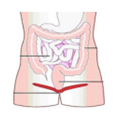Information about abdominal massage
What is abdominal massage?
A clockwise massage over your abdomen (tummy) that takes 10 to 20 minutes, which may:
- reduce the need for long term laxative medication
- help to relieve flatulence (wind) and (or) constipation
- reduce the incidence of hospital admission due to faecal impaction and associated health problems.
Who can give it?
Anyone who undertakes the appropriate training. This may be a self massage or massage by a carer.
Who is it given to and where?
Adults with primary constipation.
Who would benefit?
- Most people suffering with chronic constipation
- People with abdominal cramps due to flatulence
- People who, in spite of having regular enemas, still have some problems with bowel evacuation
- People who regularly take laxatives.
Abdominal massage is not for people who have:
- a history of malignant bowel obstruction or an abdominal growth
- a history of inflammatory disease of the intestine
- pregnancy
- spastic colon (not to be confused with spasticity of the abdominal wall) experienced in irritable bowel syndrome (IBS)
- unstable spinal injury
- recent scarring
- skin lesions
- care is to be exercised with any abdominal hernia-hiatus, umbilical or inguinal
How do we know it works?
Research has shown that the use of a sequence of massage techniques as part of an integral bowel management programme can improve bowel function.
Statistical analysis of the results indicated that there was no evidence to show any difference between laxative therapy and abdominal massage therapy when assessed against gastro-intestinal transit time.
Evidence suggests that, due to negative consequences of long term laxative use, abdominal massage is proving to offer an alternative therapeutic intervention.
Total bowel management: Other areas to consider
- diet and fluid intake
- mobility
- exercise
- medication
- physical difficulties in using the toilet
- behavioural problems.
Patient information
Learning to do the exercises
Learning to do the exercises
Step 1: Stroke upwards

Step 2: Stroke from lumbar
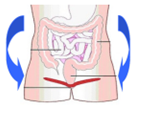
Step 3: Effleurage (toothpaste stroke)
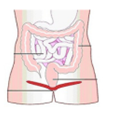
Step 4: Palmar kneading, descending colon
(down pipe)
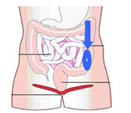
Step 5
Reverse Step 4
Step 6
Repeat Step 4
Step 7: Stroking
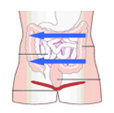
Step 8: Vibrations over umbilicus
